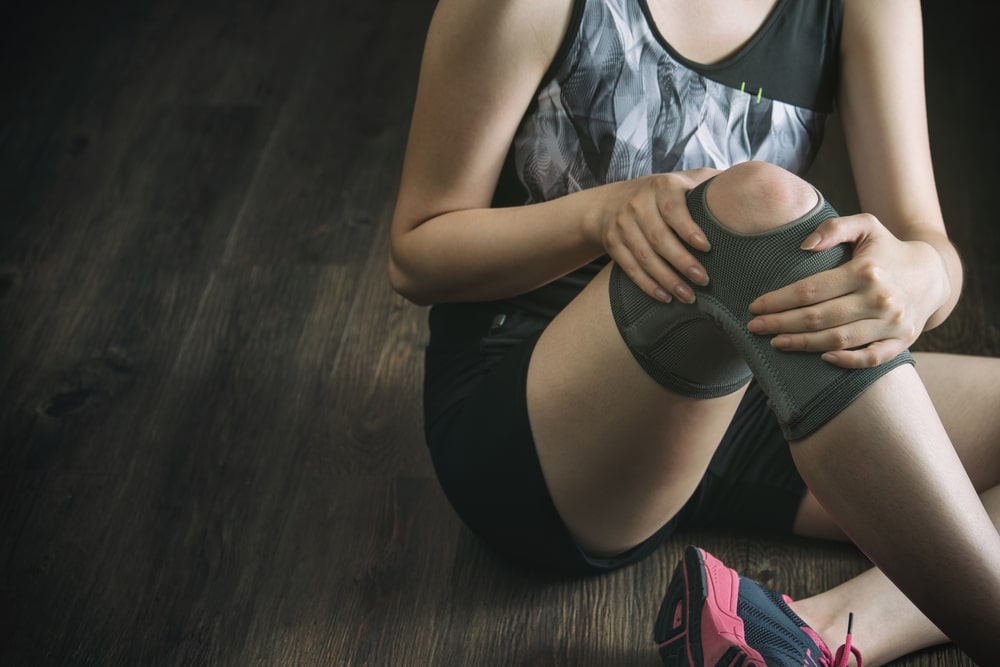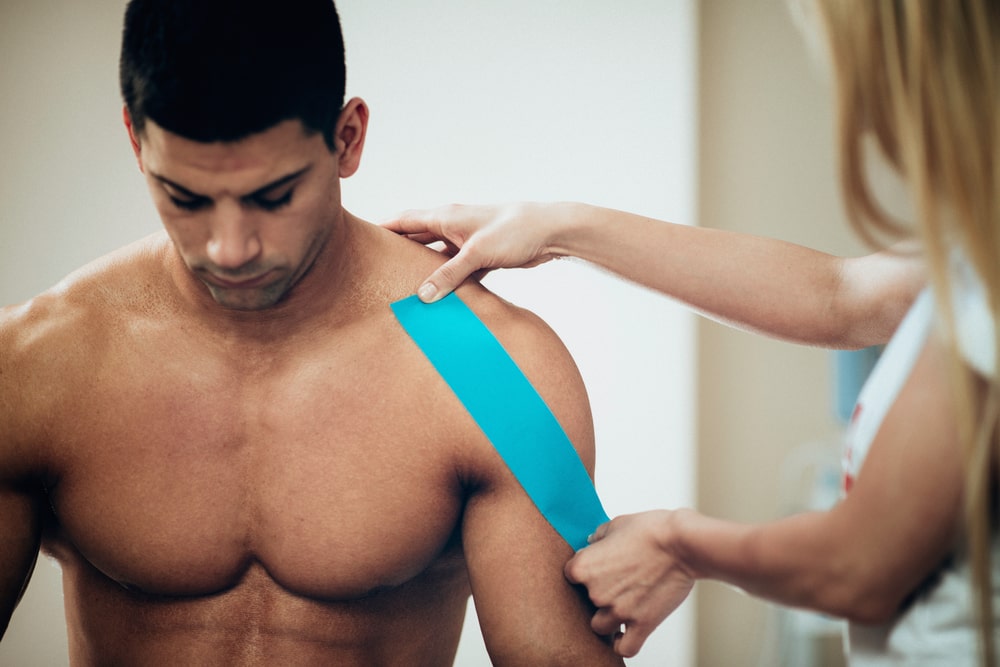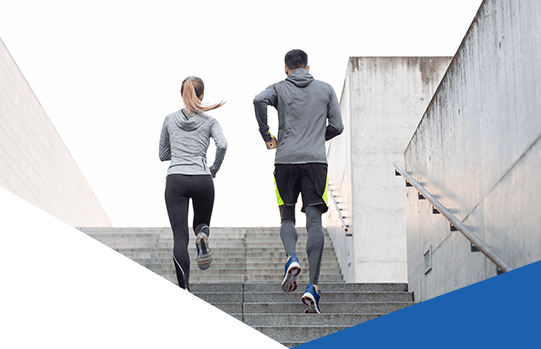Physical activity is more important these days than ever before, and as such, it can be helpful to plan ahead for the unfortunate scenario of developing an injury that alters your ability to participate in your usual hobbies and activities. While maintaining a baseline level of activity can go a long way to help prevent injuries, sometimes things happen that we simply cannot avoid.
Some of the most common injuries involve muscles, for example, tweaking your neck on the golf course, straining your calf muscle on a hike, or hurting your shoulder working on a home improvement project. These types of muscle injuries can happen to anyone and can occur in any setting, leading to a wide array of potential diagnoses. However, for those who haven’t been formally trained in a health profession, it can be confusing to know how to safely and effectively treat a muscle injury. Therefore, the purpose of this article is meant to provide information on common ways you can help speed up recovery from a muscle injury.

Girl with muscle pain
P.R.I.C.E.
The acronym ‘P.R.I.C.E.’ stands for Protection, Rest, Ice, Compression, and Elevation. This is an important acronym to remember in the very early stages of a muscle injury. With most injuries, muscle injuries included, there are three stages of healing: the inflammatory phase, the proliferative phase, and the remodelling phase. The acronym P.R.I.C.E. would apply to the inflammatory phase.
It is a common notion that inflammation is a negative process that should be minimized as much as possible, hence the popularity of anti-inflammatory drugs. However, inflammation is actually a necessary component of recovery from an injury. This phase of healing is necessary to allow the body to eliminate dead or damaged tissue and provide a clean slate for the formation of newer and healthier tissue. The problem is when this phase lasts too long because the body is not exposed to the appropriate environment for healing. Normally, the inflammatory phase should last about 3 to 7 days. By incorporating the concept of P.R.I.C.E. into the initial stages of healing, one can ensure they allow the body to heal appropriately prior to re-initiating potentially provocative activity, as light as that activity may be.
The benefits of protecting the site of injury from further trauma are fairly obvious and intuitive. When it comes to rest, this doesn’t mean sitting on the couch for a week straight, but rather, not forcing the muscle to work through pain during this inflammatory phase. Ice, when applied properly, can be very helpful to reduce pain and swelling that occurs in the early stages of injury, which ultimately helps speed up recovery in this inflammatory phase. Light compression with a tensor bandage can also be helpful to reduce pain, decrease swelling, provide support to a joint, and promote increased nutrient-rich circulation to the site of injury. The elevation is typically used to reduce swelling. An example of elevation would include lying on your back and putting your foot up on a pillow if a lower leg injury was sustained. All of these points, especially when used in combination, can help speed up the recovery of a muscle injury.
Physiotherapy Assessment and Treatment
Physiotherapists are experts in treating orthopedic conditions, and as such, a formal assessment by your local physiotherapist can go a long way in guiding your recovery. Sometimes all people need is a little advice and support along the way, which can significantly speed up recovery times. A physiotherapist will be able to diagnose your injury, provide education on how to manage the injury, and then determine the best course of treatment. Additional follow-up treatments may be recommended to further allow for speedier healing with the ultimate goal of getting you back to the activities you enjoy.
For muscle injuries specifically, physiotherapists may use a wide array of treatment techniques including, but not limited to, the following:
- Ice and/or heat
- Soft tissue release
- Therapist-assisted mobility and stretching exercises
- Therapist-assisted strengthening exercises
- Joint mobilizations
- Electrotherapeutic modalities
- Transcutaneous electrical nerve stimulation (TENS)
- Neuromuscular electrical stimulation (NMES)
- Interferential current (IFC)
- Electro-acupuncture
- Ultrasound - The development of a targeted home exercise program will allow you to take control of your recovery.
Lifestyle Factors
Many things can fall under the category of lifestyle factors. For example, diet, sleep habits, hobbies/interests, and consumption of recreational substances. While lifestyle factors can be difficult to adjust, it’s worth keeping in mind some adjustments that can be quite effective.
First and foremost, smoking and alcohol consumption can amplify the inflammatory phase of healing and prolong the healing process in general. Many patients have the misconception that smoking or drinking can take the edge off their symptoms, but in reality, this will lead to a cycle of delayed healing and potentially risks dependence on these substances. It is understandable if completely cutting out these substances is not an option, but reducing frequency or amount of consumption overall can have a significant impact on injury recovery.
Additionally, sleep is very important when it comes to injury recovery. There may be more ideal and less ideal sleeping positions for various injuries, but at the end of the day, maximizing your sleep in any position is likely to assist in your recovery from a muscle injury (keep in mind specific orders from your doctor or physiotherapist may override this general concept).
Nutrition
It is well known that nutrition is highly important for health and fitness overall, and this includes maintaining adequate hydration. There is no set diet for optimizing muscle injury recovery, but things to avoid would include food with high sugar content and highly processed foods. Sugar, which is known as a simple carbohydrate, can increase gut inflammation, which at the very least won’t help with healing. Processed foods are thought to do the same, although the evidence behind this is more controversial.
A more recent area of interest when it comes to nutrition and healing includes intermittent fasting. While the evidence is somewhat lacking, it is certainly an area worth keeping an eye on. One study published in 2013 showed that intermittent fasting, especially before an injury occurs, can have a general effect on indirect markers associated with muscle damage that is measured via blood tests. That said, whether or not this translates to meaningful differences for most patients remains to be seen.
Link to article: https://www.ncbi.nlm.nih.gov/pmc/articles/PMC3622193/
Summary
Overall, there is a multitude of ways to accelerate healing after a muscle injury, some ways more proven than others. While this article provides insight into these strategies, the most reliable course of action is to seek physiotherapy treatment, as this offers the most robust and evidence-based approach to rehabilitation of a muscle injury. Additionally, you will have the support of professionals with many years of clinical experience, so you can have confidence that you are on a speedy track to recovery.





